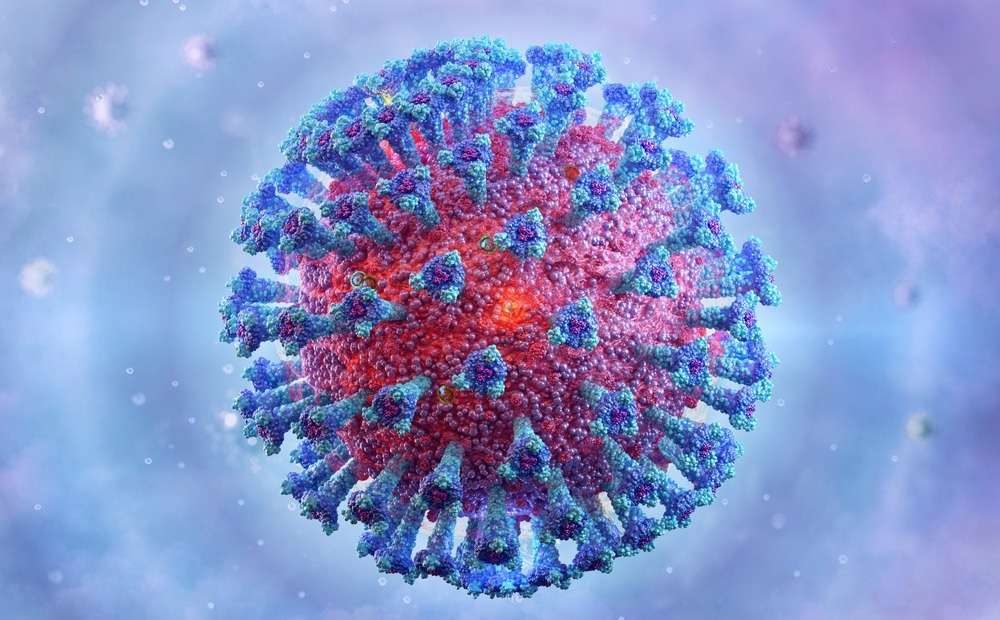In a recent study posted to the bioRxiv* preprint server, researchers explored the relationship between the development of goblet inflammatory cells and the age-related pathophysiology of severe acute respiratory syndrome coronavirus 2 (SARS-CoV-2).
 Study: The emergence of goblet inflammatory or ITGB6hi nasal progenitor cells determines age-associated SARS-CoV-2 pathogenesis. Image Credit: Corona Borealis Studio/Shutterstock
Study: The emergence of goblet inflammatory or ITGB6hi nasal progenitor cells determines age-associated SARS-CoV-2 pathogenesis. Image Credit: Corona Borealis Studio/Shutterstock

 *Important notice: bioRxiv publishes preliminary scientific reports that are not peer-reviewed and, therefore, should not be regarded as conclusive, guide clinical practice/health-related behavior, or treated as established information.
*Important notice: bioRxiv publishes preliminary scientific reports that are not peer-reviewed and, therefore, should not be regarded as conclusive, guide clinical practice/health-related behavior, or treated as established information.
Background
The nasal epithelium is the principal barrier against inhaled infections, while nasal epithelial cells (NECs) serve as the major target of coronavirus disease 2019 (COVID-19) infection. Infection of the upper airway cells can spread distally, resulting in extensive alveolar damage and long-term consequences like the incidence of lung fibrosis.
Current research indicates that, to an extent, a pre-activated antiviral interferon (IFN) state within the upper airway epithelium protects children from infection. This may partly explain why children are more protected, but it does not entirely explain the age-related increase in infection risk among adults. Investigation regarding epithelial infection and subsequent repair against COVID-19 can yield innovative treatment methods for COVID-19 and for any future developing respiratory virus risks.
About the study
In the present study, researchers assessed changes in the cellular topography and function of SARS-CoV-2-infected pediatric, adult, and elderly nasal epithelial cells.
For this investigation, fresh nasal brushings were obtained from humans. Four matched nasal brush specimens from children were employed for single-cell ribonucleic acid sequencing (scRNA-seq) analysis. The team used the SARS-CoV-2 isolate (hCoV-19/England/2/2020) for infection. The African green monkey kidney cell line Vero E6 was utilized for viral propagation.
Additionally, the team quantified viral load by plaque assay, and viral copy number was quantified by quantitative real-time polymerase chain reaction (PCR). Next, the phenotypic consequences of infection on epithelial cells were estimated across age groups using a combination of live cell microscopy, proteomics, immunofluorescence labeling, and gene expression analyses.
Results
In healthy, non-infected control cultures, the proportions of several epithelial cell types varied with age. The proportion of basal/progenitor (KRT5hi) subtypes in adult, as well as elderly culture datasets was 36.5% and 35.3%, respectively, while that in the pediatric culture datasets was 13.8%. Elderly and adult cultures exhibited the highest number of basal 1 and 2 cells, which were virtually nonexistent in pediatric cultures. All age groups demonstrated comparable apical differentiation, such as mucus (MUC5AC) production along with similar amounts of cilia, with no notable variation in ciliary beat frequency (CBF) and no alteration in cellular motility with increasing age.
The most obvious change in pediatric cultures was the increasing number of goblet cells, especially the goblet 2 subsets. This indicated a change in cellular state from secretory cells discovered in elderly and adult cultures to goblet cells with higher levels of bactericidal/permeability-increasing fold-containing group A member 1 (BPIFA1).
Importantly, although the team observed no disparity in the protein levels associated with viral entry factors in the samples with age, the pediatric cultures exhibited the highest transmembrane protease serine 2 (TMPRSS2) expression, which is required for SARS-CoV-2 spike (S) protein priming 26, and the highest levels of angiotensin-converting enzyme-2 (ACE-2), which consisted of the viral S protein binding site necessary for viral entry.
Secretory as well as basal 2 cell types also had the highest TMPRSS2 and ACE2 expression in cultures of adults and elderly patients. This indicated a shift in age-related sensitivity to viral infection to secretory cells from goblet cells. Alternate factors of viral entry, like basigin (BSG), neuropilin-1 (NRP1), NRP2, cathepsin L (CTSL), and FURIN exhibited patterns similar to that of ACE2 and TMPRSS2.
The most remarkable cellular alteration following infection was the appearance of goblet 2 inflammatory cells, lacking in mock-infected pediatric samples but not in elderly or adult cultures. Furthermore, the goblet 2 inflammatory cell type had greater amounts of IFN-induced protein with tetratricopeptide repeats-1 (IFIT1), IFIT3, and CXCL10 than other goblet cell subtypes, indicating a significant association with type I IFN signaling.
Also, infected elderly epithelial cell samples exhibited an elevation in basal cell neighborhoods that were infected with SARS-CoV-2 as compared to sham cultures, indicating elderly-specific progenitor cell mobilization (proliferation) in response to SARS-CoV-2 infection.
The team also noted that SARS-CoV-2-infected elderly NECs displayed a considerably quicker wound-healing rate than infected pediatric cultures, suggesting an increase in cell mobility, which is another symptom of defective repair mechanisms. The wound-healing rate of SARS-CoV-2-infected elderly samples was remarkably quicker than that of their equivalent mock-infected cultures. Infected pediatric NECs with SARS-CoV-2 exhibited a considerably delayed wound healing rate than their corresponding mock infective cultures.
Conclusion
The study findings demonstrated that SARS-CoV-2 tropism for nasal epithelial cells varied with age, with preferred infection of pediatric goblet or adult secretory cells. Infected pediatric goblet cells exhibited a significant innate SARS-CoV-2 antiviral response driven by interferon and less infectious virions in comparison to cultures from older adults. These findings provided new insights into the pathophysiology of age-associated COVID-19 and demonstrated how defective repair increases SARS-CoV-2 infection among elderly individuals.

 *Important notice: bioRxiv publishes preliminary scientific reports that are not peer-reviewed and, therefore, should not be regarded as conclusive, guide clinical practice/health-related behavior, or treated as established information.
*Important notice: bioRxiv publishes preliminary scientific reports that are not peer-reviewed and, therefore, should not be regarded as conclusive, guide clinical practice/health-related behavior, or treated as established information.